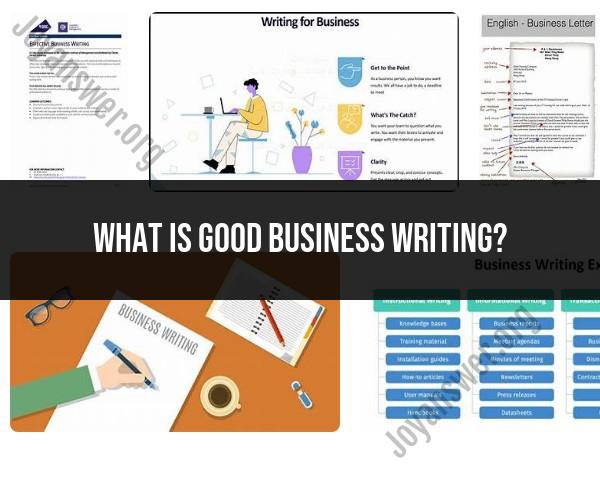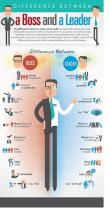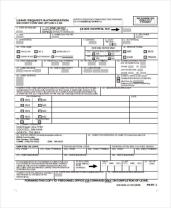What is good business writing?
Good business writing exhibits several characteristics that contribute to its effectiveness in conveying information and achieving its intended purpose. Here are some essential elements and characteristics of good business writing:
Clarity:
- Good business writing is clear and easy to understand. It avoids jargon, complex sentences, and unnecessary technical terms. The message should be straightforward and accessible to the intended audience.
Conciseness:
- Effective business writing conveys information using as few words as necessary. It eliminates unnecessary details, redundancies, and wordiness. Concise writing respects the reader's time and increases the likelihood that the message will be read and understood.
Professional Tone:
- Business writing should maintain a professional and respectful tone. The language used should be formal and appropriate for the audience and context. Avoiding overly casual or informal language helps maintain a sense of professionalism.
Audience-Centered:
- Good business writing considers the needs and expectations of the audience. It tailors the message to the specific characteristics and interests of the readers, ensuring that the information is relevant and engaging to them.
Purposeful Organization:
- Information in business writing should be organized in a logical and purposeful manner. Whether it's a report, email, or proposal, there should be a clear structure with an introduction, body, and conclusion. Headings and subheadings can be used to enhance readability.
Correct Grammar and Spelling:
- Business writing should adhere to proper grammar, spelling, and punctuation rules. Errors in these areas can undermine the credibility of the message and create confusion. Proofreading is essential to catch and correct any mistakes.
Professional Formatting:
- The visual appearance of business writing matters. Proper formatting, including consistent font styles and sizes, spacing, and alignment, contributes to a polished and professional look. Well-formatted documents are easier to read and more visually appealing.
Appropriate Language:
- Use language that is appropriate for the context and audience. Avoid overly technical terms unless the audience is familiar with them, and be mindful of cultural and regional differences in language usage.
Purposeful Use of Graphics:
- When appropriate, good business writing incorporates visuals such as charts, graphs, or tables to enhance understanding. Visual elements should be relevant, well-labeled, and support the main points of the text.
Active Voice:
- Prefer the active voice over the passive voice to make the writing more direct and engaging. Active voice clearly identifies the subject performing the action, leading to more impactful and concise sentences.
Revision and Editing:
- Good business writing involves a process of revision and editing. After drafting, take the time to review and refine the content. This helps catch errors, improve clarity, and enhance overall quality.
Adaptability:
- Effective business writing is adaptable to different communication channels and formats. Whether it's an email, formal report, or presentation, the writing style should be adjusted to suit the medium and purpose.
By incorporating these characteristics, business writing becomes a powerful tool for communication, facilitating understanding, and achieving the intended goals within a professional context.
Characteristics defining high-quality business writing practices
High-quality business writing goes beyond simply conveying information; it aims to engage, persuade, and achieve specific objectives. Here are some key characteristics that define it:
Clarity and Conciseness:
- Precise and focused language: Use straightforward language that avoids jargon and technical terms unless absolutely necessary. Aim for active voice and concise sentences for better readability.
- Logical organization: Structure your writing with a clear introduction, body paragraphs with supporting arguments, and a strong conclusion. Ensure smooth transitions between ideas.
- Emphasis on key points: Highlight important information through headings, bullet points, or bold text. Don't bury crucial details within lengthy paragraphs.
Professionalism and Tone:
- Formal yet approachable: Maintain a professional tone while avoiding sounding overly formal or robotic. Adapt your tone to the specific audience and purpose of your writing.
- Grammar and punctuation accuracy: Ensure flawless grammar, punctuation, and spelling. Typos and errors can undermine your credibility and professionalism.
- Formatting and presentation: Use consistent formatting (font, margins, spacing) and professional layouts to create a visually appealing and easy-to-read document.
Engagement and Persuasiveness:
- Strong opening and conclusion: Hook your reader with a compelling introduction and leave a lasting impression with a clear and actionable conclusion.
- Use of data and evidence: Support your arguments with relevant data, statistics, or real-life examples to build credibility and persuade your audience.
- Focus on the reader's needs: Tailor your message to address the reader's specific interests, concerns, and questions. Show them how your information benefits them.
Additional Tips:
- Proofread and edit: Dedicate time to proofreading and editing your work for errors, clarity, and flow. Consider getting feedback from colleagues or professionals.
- Know your audience: Adapt your writing style and level of detail to the specific audience you are targeting.
- Use active voice: Opt for active voice constructions for clearer and more impactful communication.
- Conciseness matters: Avoid unnecessary wordiness and redundancy. Every word should serve a purpose.
- Embrace visuals: Consider using infographics, charts, or diagrams to enhance understanding and break up text-heavy sections.
By adhering to these characteristics, you can elevate your business writing to a level that engages your audience, achieves your goals, and leaves a lasting positive impression. Remember, high-quality writing is an investment in your professionalism and the success of your communication efforts.













